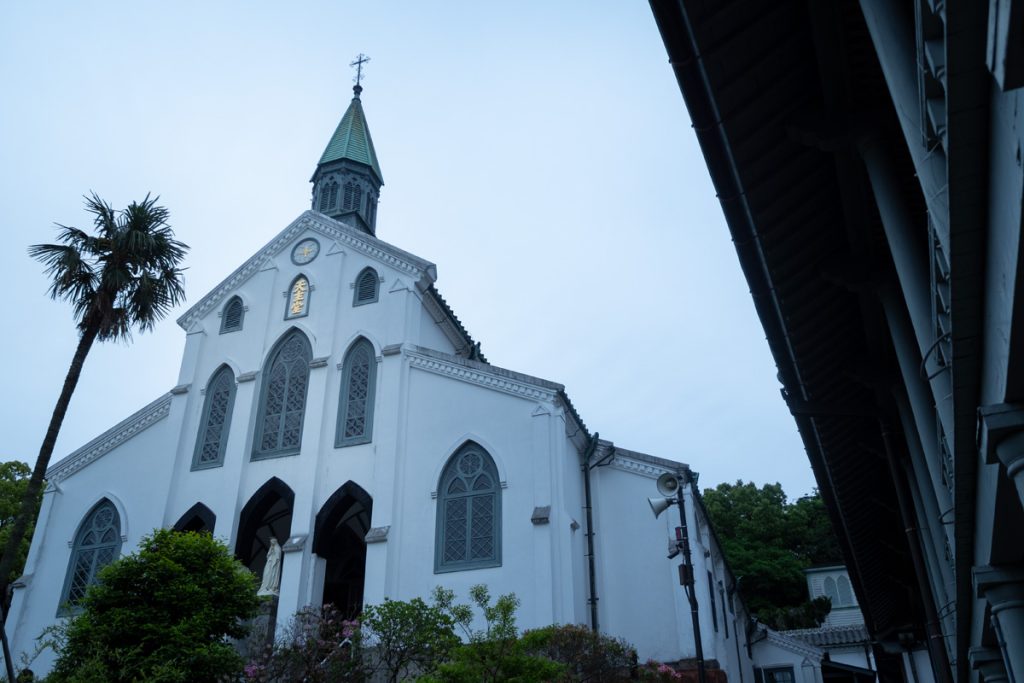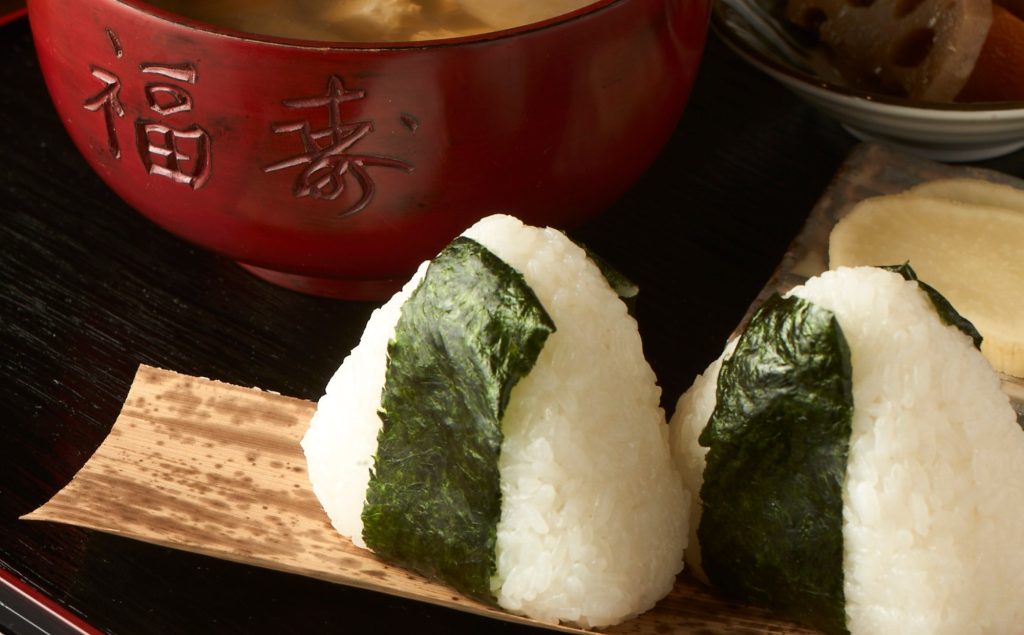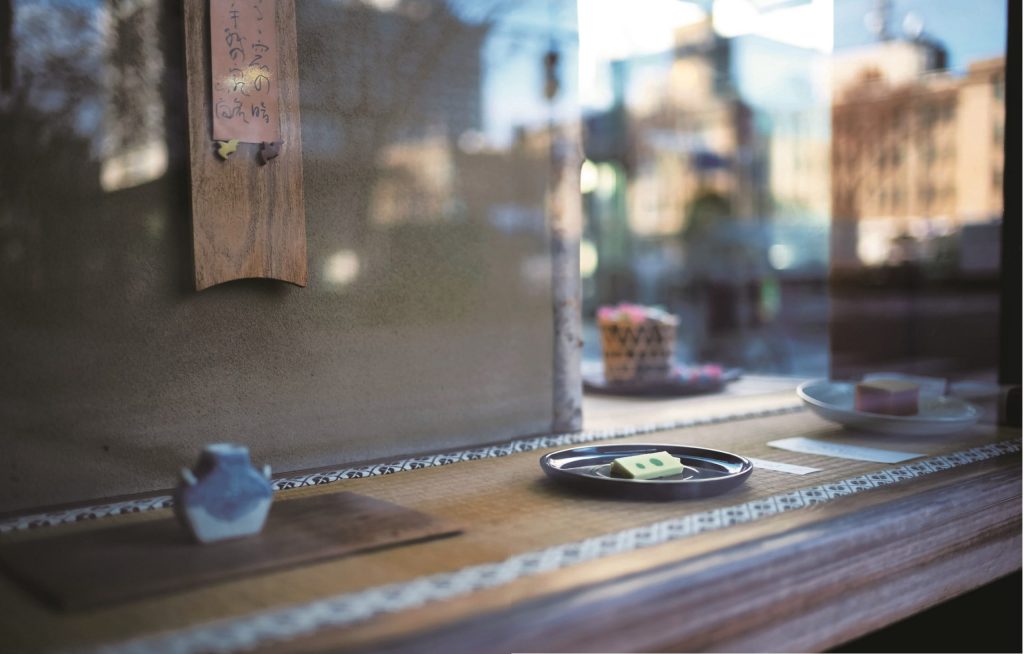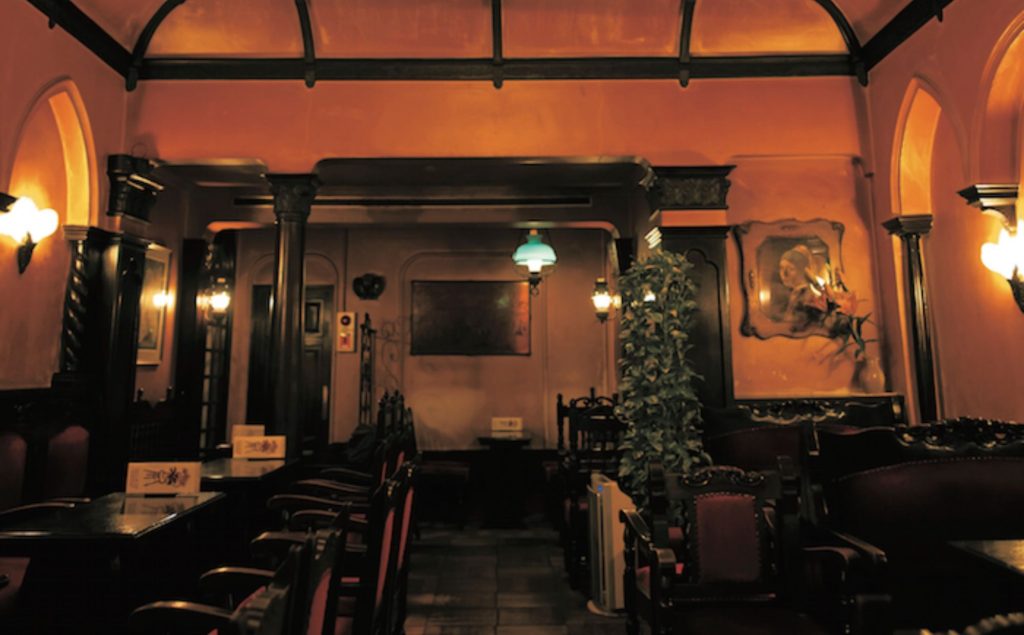There are more than 2,500 sources and 87,616 liters per minute (hard to comprehend how much is in there!), all of which make Beppu (別府) the number one hot spring resort in Japan. This time, we will introduce you to Kannawa (鉄輪) Onsen in Beppu, which has a nostalgic Showa-era atmosphere.
Enjoy the entire town of Kannawa Onsen.
Between Tsurumidake (鶴見岳) and Beppu Bay, there are eight hot spring towns: Beppu, Myoban (明礬), Kamegawa (亀川), Shibaseki (柴石), Kannawa, Horita (堀田), Kankaiji (観海寺), and Hamawaki (浜脇). The Beppu Hatto (八湯) hot springs account for the majority of the total number of hot springs in Oita Prefecture, and with 10 of the 11 types of hot springs in the prefecture, Beppu is a hot spring paradise, which explains why it is called ‘Sento (泉都=capital of hot spring)! Of the eight Beppu hot springs, Kannawa Onsen offers the best of the hot spring town atmosphere.
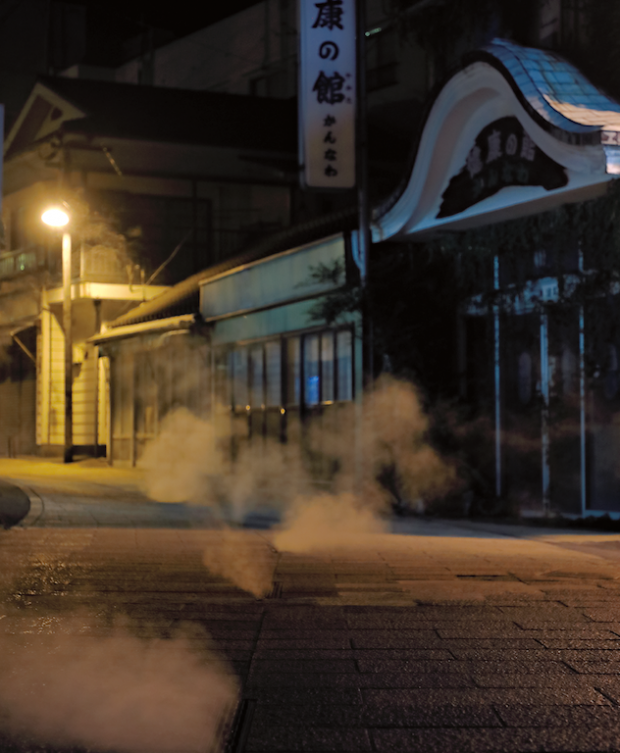 Because most of the source temperatures at Kannawa exceed 90 degrees Celsius, a thick cloud of steam rises 24 hours a day, 365 days a year, not only from the springs and gushing point, but also from road drains.
Because most of the source temperatures at Kannawa exceed 90 degrees Celsius, a thick cloud of steam rises 24 hours a day, 365 days a year, not only from the springs and gushing point, but also from road drains.
The Iyonokuni Fudoki (伊予国風土記), compiled in the early 8th century, states that the hot springs of Beppu cured the illness of Sukunahikono-mikoto (少彦名命), and in the Kamakura period, there is a record that warlord Otomo Yoriyasu (大友頼泰) built sanatoriums in Beppu and Kannawa. Kannawa Onsen is said to have been founded by Ippen Shonin (一遍上人), a monk of the Kamakura period, and Ippen-san is seen here and there in the town.
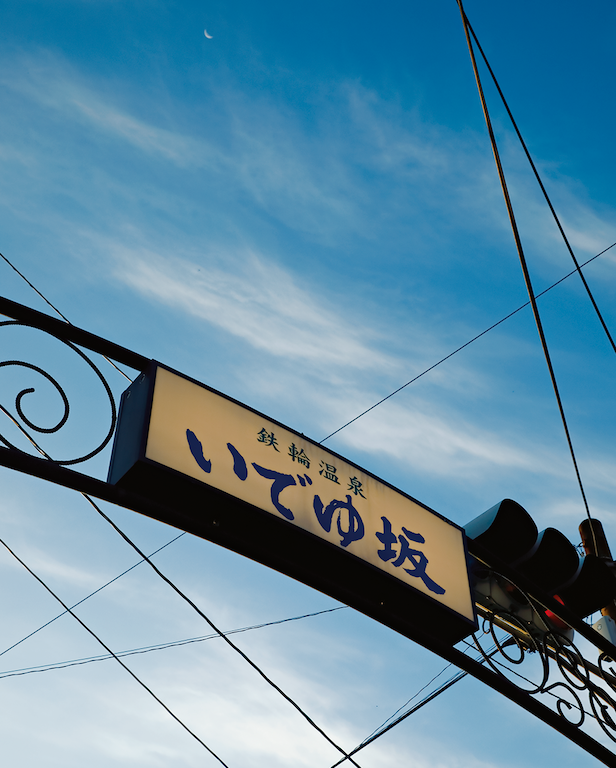 A view that captures the showa retro feel!
A view that captures the showa retro feel!
Centered on the main street that runs from Ideyu-zaka to Miyuki-zaka, this hot spring resort town is just the right size for a stroll. Enjoy walking through the labyrinth of small streets and stone steps, and enjoy a snack of steamed eggs and sweet potatoes, or take a rest at a café built in a wooden ryokan (Japanese inn) founded in the Meiji period. Taking a bath at a public bathhouse, commonly known as ‘Jimosen (ジモセン),’ managed by local residents is another way to enjoy Kannawa Onsen.
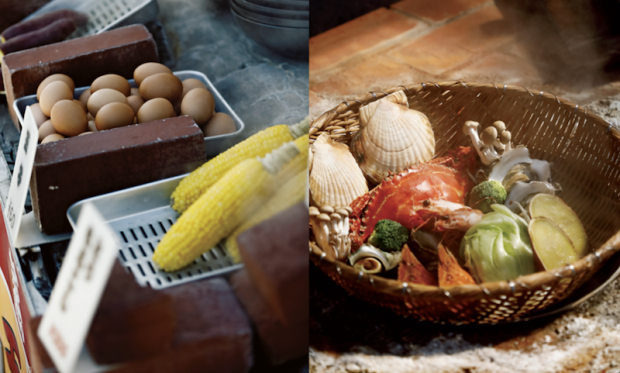 ‘Jigoku-mushi (地獄蒸し)’ is a specialty of Kannawa. Both the seafood from the Bungo channel and Seto inland sea, and the harvests from the Kujyu mountain range and highlands are steamed using the heat of the salty Kannawa water, giving it a delicious slightly salty flavor!
‘Jigoku-mushi (地獄蒸し)’ is a specialty of Kannawa. Both the seafood from the Bungo channel and Seto inland sea, and the harvests from the Kujyu mountain range and highlands are steamed using the heat of the salty Kannawa water, giving it a delicious slightly salty flavor!
If you take a stroll and enjoy the famous ‘Jigoku Meguri (地獄めぐり),’ you will be able to experience a hot spring trip that can only be had in Kannawa.
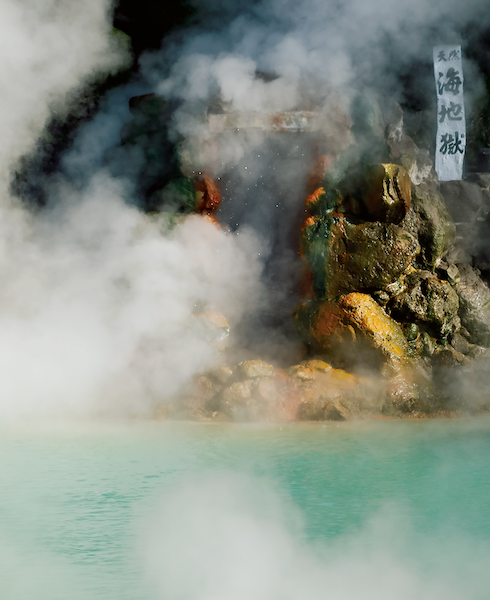
The ‘Jigoku Meguri (hells of beppu) tour takes visitors to hot spring gushing points (=hells) scattered from Kannawa to Kamegawa. The tour takes four hours to visit each of the seven ‘hells’, which differ greatly in characteristics, including the tropical ‘Sea,’ ‘Oniishibozu (鬼石坊主),’ where hot mud bubbles out of the ground, and ‘ Chino ike (血の池=pond of blood),’ where even the steam is red.
Kannawa Onsen Photo Gallery
 The ground is always warm, so the whole town is slightly warm. Even the cats seem to feel comfortable.
The ground is always warm, so the whole town is slightly warm. Even the cats seem to feel comfortable.
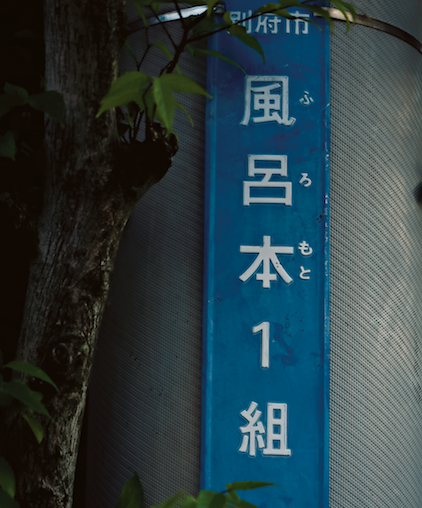 How cool is it that the address is ‘Furumoto (風呂本)’!
How cool is it that the address is ‘Furumoto (風呂本)’!
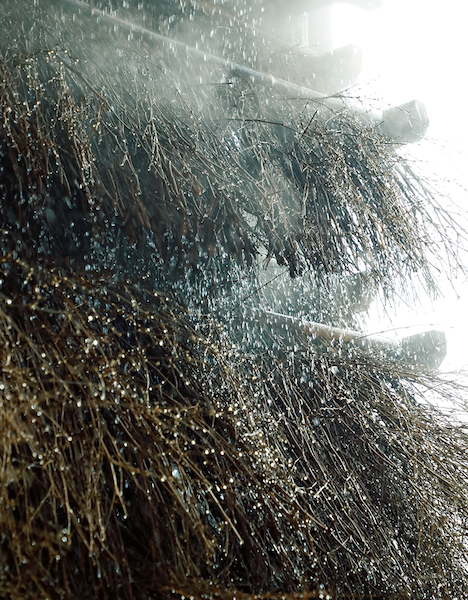 A device called ‘yuametake (湯雨竹),’ which cools the hot spring water using specialty bamboo.
A device called ‘yuametake (湯雨竹),’ which cools the hot spring water using specialty bamboo.
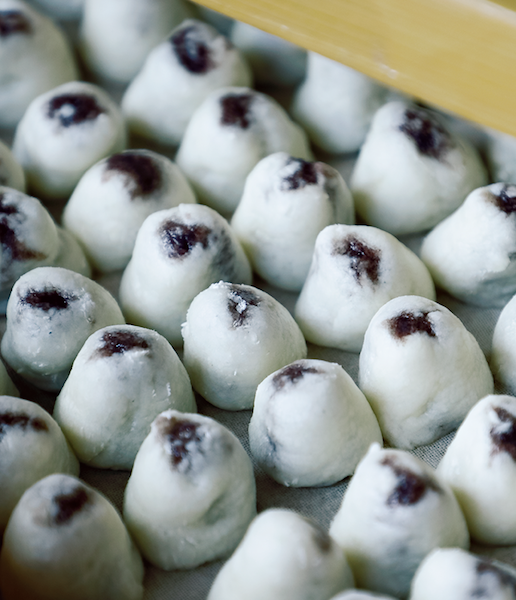 A specialty of the Jigoku Meguri tour is the thumb-sized onsen manju (温泉まんじゅう, hot spring bun).
A specialty of the Jigoku Meguri tour is the thumb-sized onsen manju (温泉まんじゅう, hot spring bun).
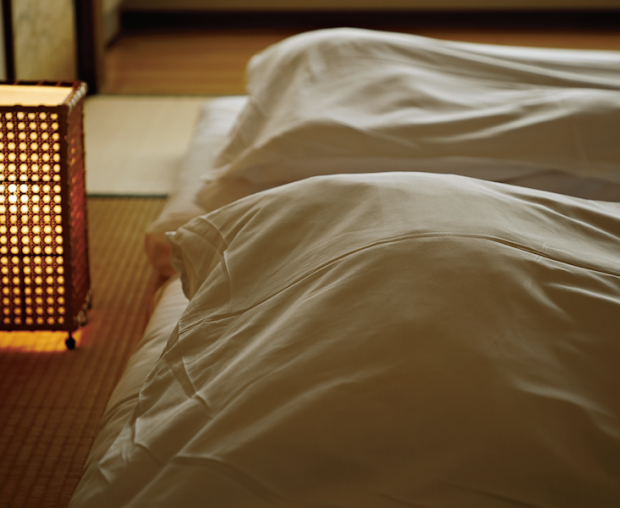 ‘Manrikiya (萬力屋)’ is a four-room inn run by a family of four.
‘Manrikiya (萬力屋)’ is a four-room inn run by a family of four.
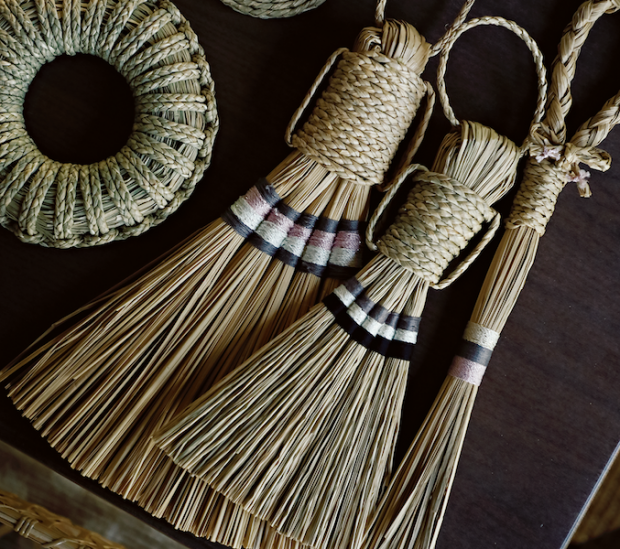 There are also bamboo products and handicrafts such as shittoi (七島イ) that is grown only on the Kunisaki (国東) Peninsula.
There are also bamboo products and handicrafts such as shittoi (七島イ) that is grown only on the Kunisaki (国東) Peninsula.
 The town of Kannawa and this view of Beppu Bay are often used in images of Beppu.
The town of Kannawa and this view of Beppu Bay are often used in images of Beppu.
This article is translated from https://intojapanwaraku.com/rock/travel-rock/2240/









